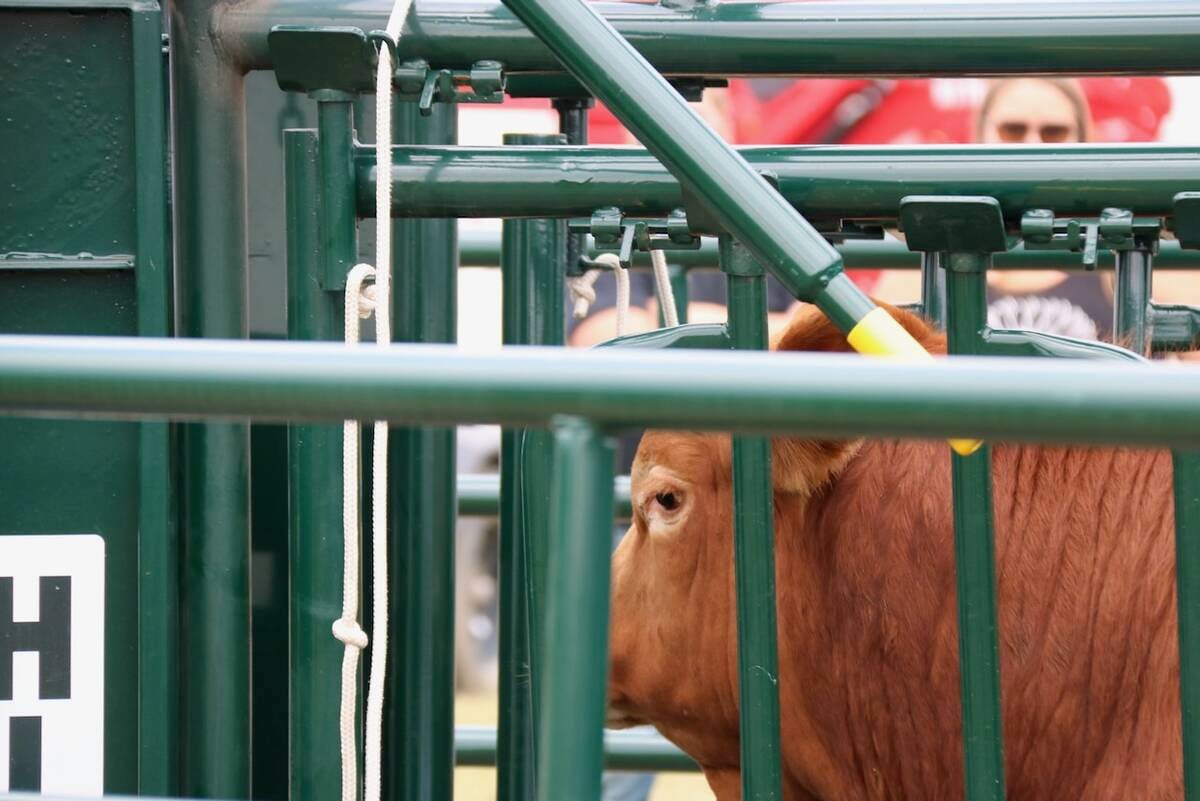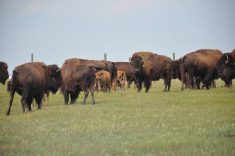After rock bottom prices a year ago, feeder calf values took a giant leap forward this fall.
A turnaround in the cattle cycle along with lower feed costs saw 550-pound calves delivered for $1.35 a pound and many 900-lb. grass cattle reached highs of $1.08 to $1.12, according to Canfax figures.
Last week southern Alberta steers in the over-900-lb. class slipped a bit and were priced at $95.90 compared to $84.55 last year. The 500-600 lb. category were bid at $93-$130 to average $113.88.
Most of the grass run happened in August so these healthy prices for heavy steers are already settling down.
Read Also

Good handling equipment a must on cattle operations
It’s important for the safety of producers and everyone else dealing with their stock that handling equipment is functional and safe.
“I’d say 80-90 percent of the grass run is behind us. It’s already been priced,” said Anne Dunford, senior market analyst at Canfax.
Besides selling earlier this year, more cattle moved through the system and were marketed in a number of different ways through forward pricing, satellite or computer auctions, as well as the traditional auction market.
In August, 115,000 head of feeders were sold compared to 100,000 in August 1996.
By October and November the prices will be closer to seasonal norms, but will still trade over 1996 figures. Last year was the lowest price trough in 13 years, said Dunford.
Feedlots need calves
The demand for these calves is spurred by continued feedlot expansion in Alberta, as well as lower feed costs and a feeding industry that has enjoyed 14 consecutive months of profit.
In 1996, Alberta’s one-time feedlot capacity was 850,000 head. With pen expansion going on throughout the province, feedlots will be able to handle about one million head one-time capacity by the beginning of 1998.
Kevin Grier, market analyst in Ontario, said prices in the East showed considerable strength as well but face stiff competition from the West.
The recent fall sale at Wiarton, Ont., considered a bellwether for feeder prices, showed steers weighing 900 lb. or better coming off grass going for about $1 a pound. Price ranges were 93 cents to $1.08. Calves in the 600-700 lb. range fetched $1.05 on average, said Grier.
Higher in the West
With continued feedlot expansion in Alberta, summer prices out west for 900 lb. steers were $2 to $5 higher than Ontario.
“Price differences like that don’t bode well for cattle in Ontario,” said Grier.
Feeders are needed in Ontario but with strong prices in the West it will be harder for eastern buyers to obtain cattle. As of the beginning of September, 18,500 slaughter cattle had moved from the West to Ontario compared to the average of 22,000 head for this time. Inventories in eastern feedlots have declined steadily over the years with the competition in Alberta.
To maintain profit, feedlot operators must watch their break-even points.
Grier predicted an 850-lb. steer sold in March or April will break even at $90 to $93 per cwt. if total costs are $60-$65 per cwt. Any shift in expenses like feed costs will change the scenario.
“The main thing is the basis. If the basis doesn’t co-operate, meaning if the supply-demand situation in Alberta is such that local prices decline relative to other areas, then they’ll lose quite a bit of money. But if the basis stays firm then they’ll still have relatively narrow margins,” said Grier.
Another glitch would happen if barley moved out of $2.50-$2.75 basis Alberta, said Dunford.
Barley prices are moving toward $3 a bushel in Western Canada. As they creep upward, cattle prices feel the impact.
“Anytime it makes a move upwards, it will negatively affect feeder cattle,” said Dunford.















